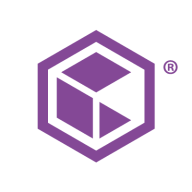

Commvault Cloud and Microsoft Exchange compete in the IT solutions category, with Commvault Cloud focusing on comprehensive data management and protection, while Microsoft Exchange is recognized for robust email communication capabilities. Commvault Cloud appears to have the upper hand in data management due to its extensive feature set and integration capabilities.
Features: Commvault Cloud distinguishes itself with direct SAN backup capabilities, global data deduplication, and seamless cloud integration, offering a centralized management console for efficient data protection across environments. Microsoft Exchange is praised for its robust email communication, strong integration with Microsoft products, and ease of collaboration, contributing significantly to its appeal in email management and integration within Microsoft's ecosystem.
Room for Improvement: Commvault Cloud users suggest enhancing the bare-metal restore process, improving customer support documentation, and simplifying error code complexities. Microsoft Exchange users recommend improving storage management, search functionality, and enhancing integration with non-Microsoft products, along with better spam filtering and stronger security measures.
Ease of Deployment and Customer Service: Commvault Cloud provides flexibility with deployment across Private, Hybrid, and Public Clouds, along with commendable customer service noted for quick response times. Microsoft Exchange, though mostly deployed on-premises, integrates well with Microsoft 365, offering responsive customer service despite some reports of slow response times and language barriers in certain regions.
Pricing and ROI: Commvault Cloud offers versatile pricing with subscription and perpetual licenses, perceived as cost-efficient at an enterprise scale, enhancing ROI through reduced infrastructure costs. Microsoft Exchange, typically bundled within Microsoft 365, provides competitive subscription models beneficial for large deployments; however, some smaller companies perceive it as expensive compared to Commvault's offerings, indicating a nuanced cost-saving strategy through modular licensing.
The number of people who know Commvault Cloud is lesser compared to Veeam.
Customer support has very closed departments, requiring us to shuffle between them to get one thing done because representatives have limited accessibility.
The Microsoft support structure, while technically proficient, involves case transfers across different global locations.
The licensing and associated costs make it challenging to scale, especially when user numbers increase.
I have not faced any downtimes with Commvault Cloud.
Commvault Cloud is highly stable, and I would rate it a ten out of ten.
I feel that the support is not yet up to the mark, with not enough professional engineers to provide assistance.
The biggest issue with Microsoft Exchange is its high cost, especially in pricing for license upgrades and expansion to more users.
Commvault Cloud is expensive, and there is room for the price to be 10-15 percent lower than what they are charging currently.
Microsoft Exchange is costly, and its licensing model can be expensive over time as more users require licenses.
Other features include endpoint solutions, integration with Office 365, ransomware protection, archival for long-term retention, and no ingress or egress charges.
We can back up unlimited TBs due to our per node license.
Microsoft Exchange is a user-friendly and easy-to-deploy solution, which is beneficial for handling emails even without professional support.
| Product | Market Share (%) |
|---|---|
| Commvault Cloud | 6.0% |
| Veeam Data Platform | 11.4% |
| Rubrik | 5.9% |
| Other | 76.7% |
| Product | Market Share (%) |
|---|---|
| Microsoft Exchange | 11.3% |
| Google Workspace | 20.1% |
| Microsoft Exchange Online | 12.5% |
| Other | 56.099999999999994% |


| Company Size | Count |
|---|---|
| Small Business | 57 |
| Midsize Enterprise | 24 |
| Large Enterprise | 81 |
| Company Size | Count |
|---|---|
| Small Business | 41 |
| Midsize Enterprise | 27 |
| Large Enterprise | 35 |
Commvault Cloud is the ultimate cyber resilience platform built to meet the demands of the hybrid
enterprise. Beyond its core functionality of data backup and recovery across diverse workloads, including applications, databases, virtual machines, and files, Commvault Cloud stands out as a robust defense against ransomware. Going beyond backup, the platform integrates advanced data security features such as encryption, access control, and threat detection, safeguarding against unauthorized access and cyber threats.
With tools for data management, classification, and migration, businesses can optimize storage costs, enhance accessibility, and comply with regulations seamlessly. Boasting cloud integration with major providers like AWS, Azure, and Google Cloud, Commvault Cloud leverages the scalability and flexibility of the cloud for comprehensive data protection and management. The platform's automation capabilities streamline tasks, and its reporting and analytics features provide valuable insights into data usage, potential risks, and optimization strategies. Commvault Cloud is not just a security tool; it is a key component of cyber resilience, enabling organizations to not only protect against cyberattacks but also recover swiftly and minimize the impact of incidents. Elevate your cyber resilience strategy with Commvault Cloud.
Built to deliver the enterprise-grade security and reliability that businesses require, Microsoft Exchange provides email, calendar and contacts on your PC, phone and web browser.
We monitor all Backup and Recovery reviews to prevent fraudulent reviews and keep review quality high. We do not post reviews by company employees or direct competitors. We validate each review for authenticity via cross-reference with LinkedIn, and personal follow-up with the reviewer when necessary.